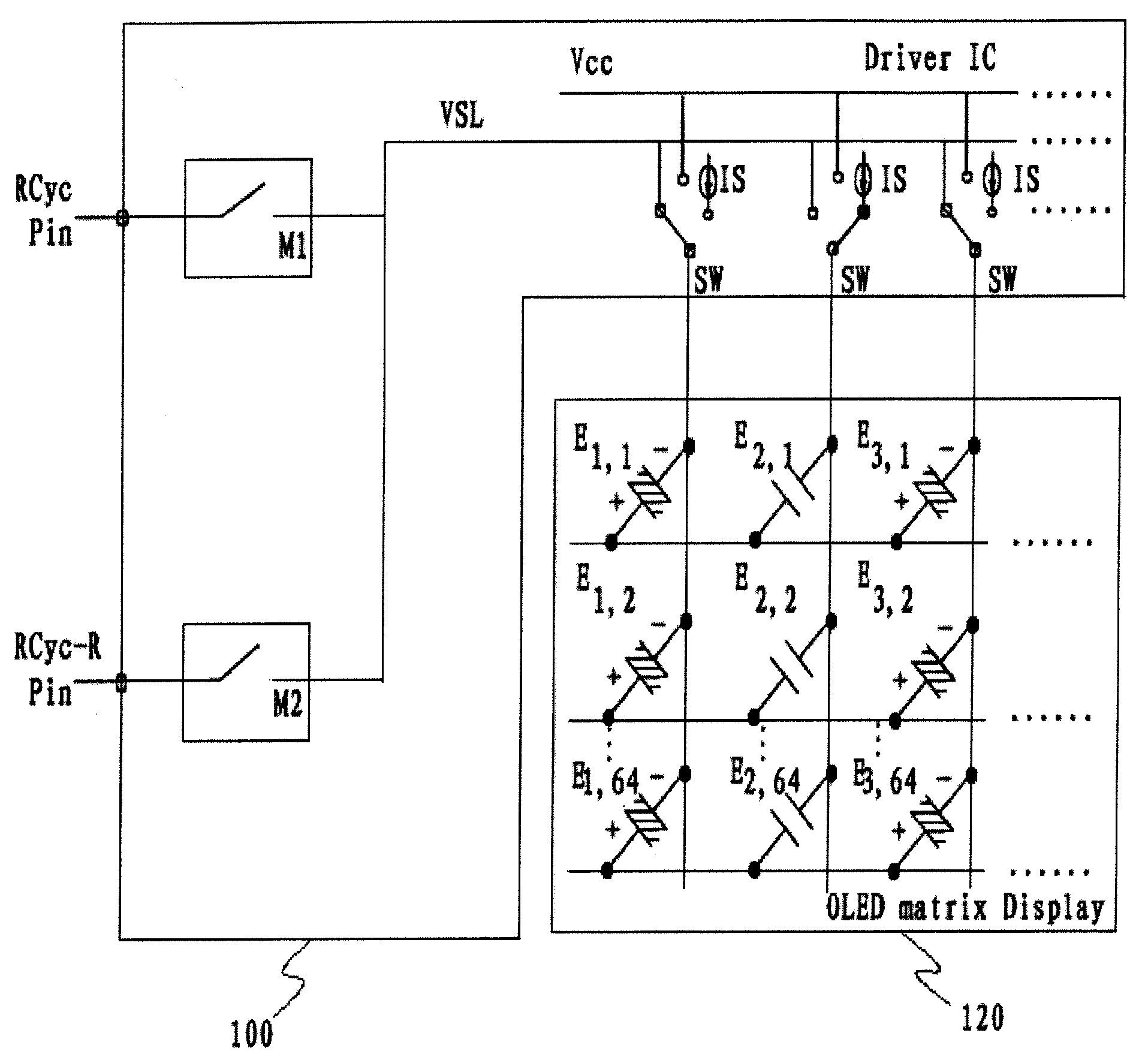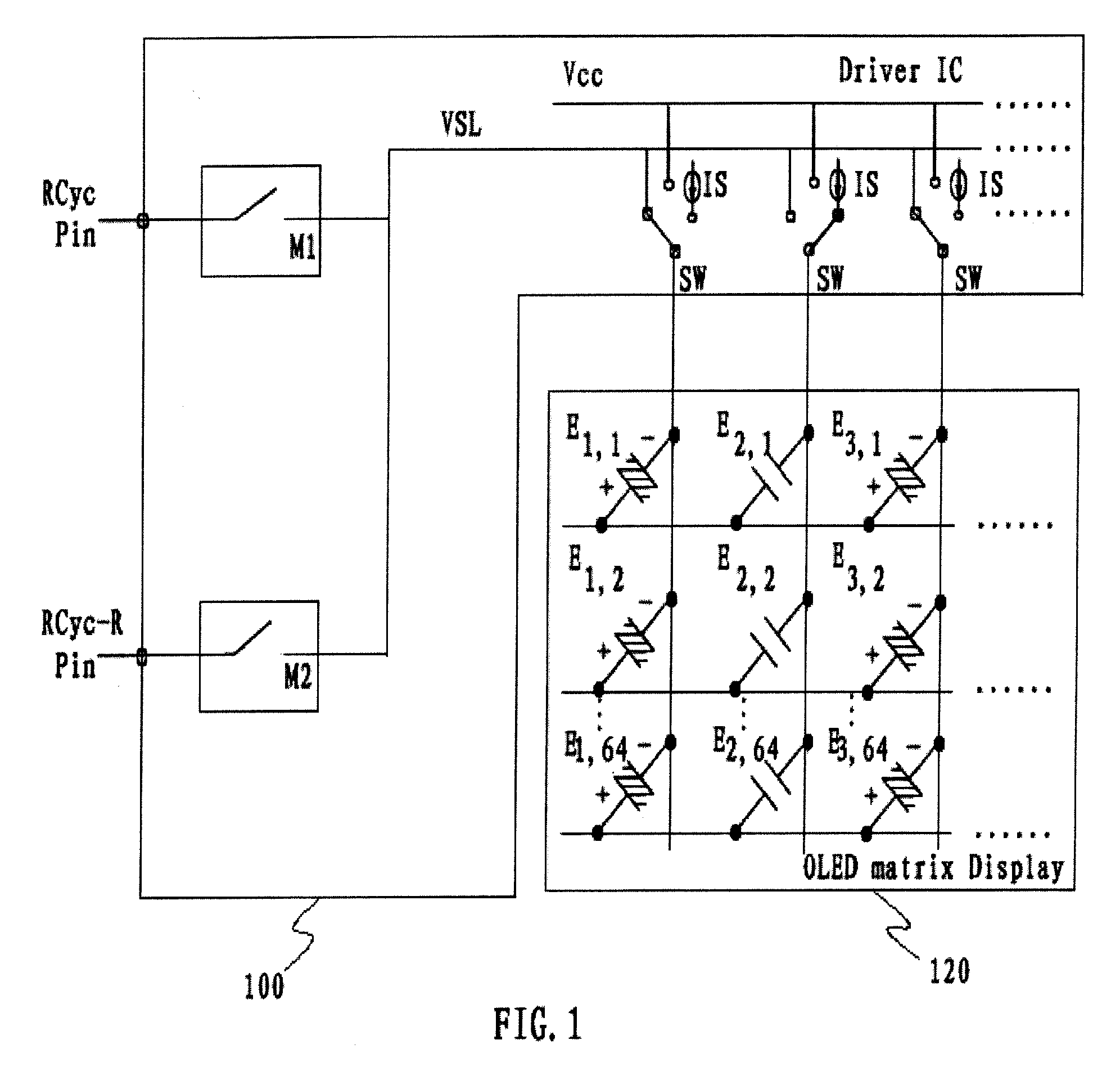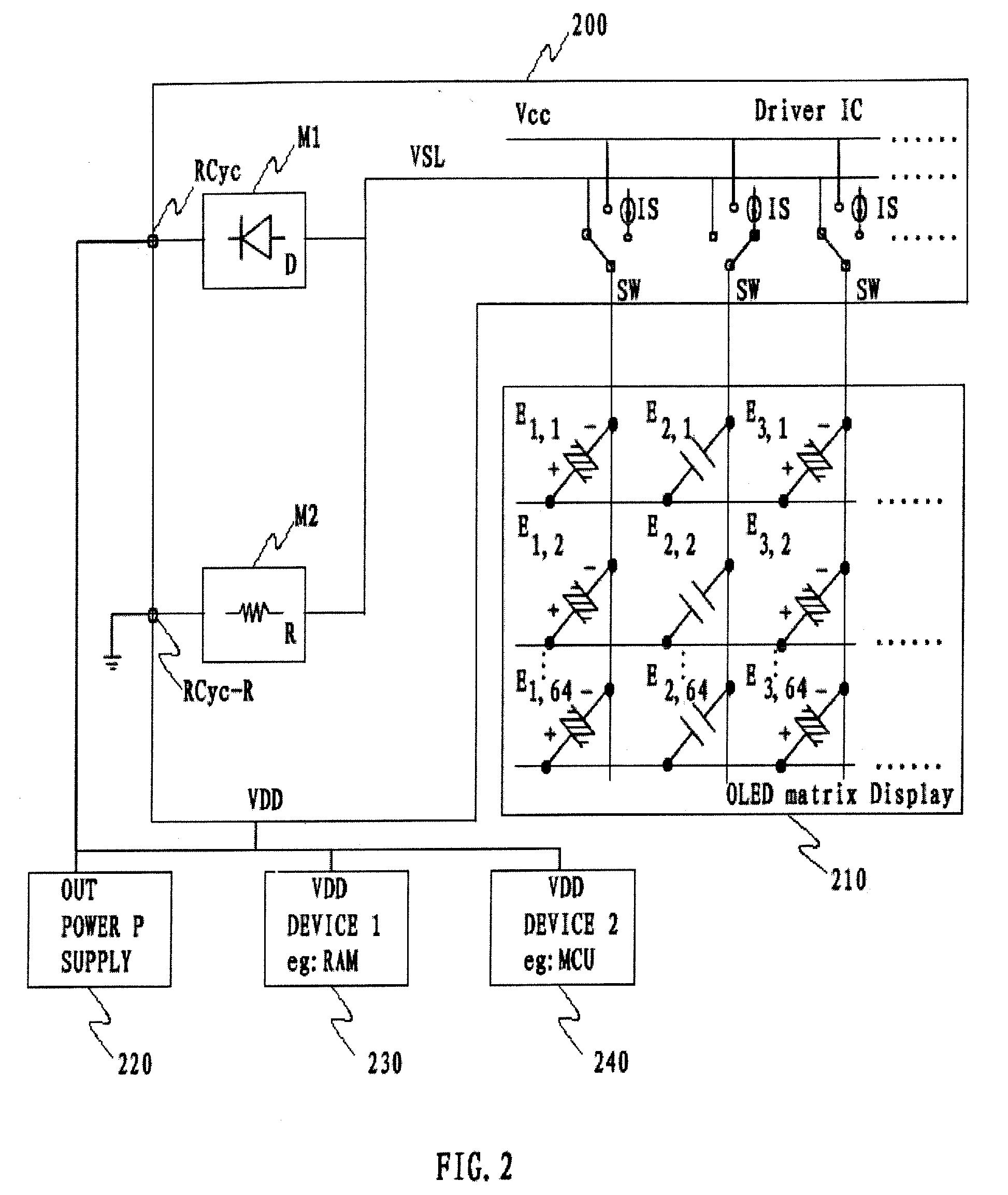Method and apparatus for power recycling in a display system
a technology of power recycling and display system, applied in the direction of instruments, static indicating devices, etc., can solve the problems of major problems such as emission time duration, deterioration of display image quality, and major problem of parametric capacitance inherent in display elements, and achieve the effect of efficient recycling of energy
- Summary
- Abstract
- Description
- Claims
- Application Information
AI Technical Summary
Benefits of technology
Problems solved by technology
Method used
Image
Examples
Embodiment Construction
[0039]The present invention enables an effective energy recycling in various situations. The advantages of the invention include:[0040]keeping recycling efficient for any driving scheme and arbitrary display image.[0041]keeping extra circuits small for all applications. Energy flows back from the panel to power supplies and other devices like RAM, MCU directly during the discharging process. Therefore, opposite to the prior art in which extra energy storage circuits, such as a number of big volume capacitors, are required, there is no extra energy storage circuits required in this invention and resulting a small circuit area.[0042]controllable voltage level after discharging and rate of discharging. This makes a design of the present invention be compatible for various applications by just setting some parameters.
[0043]FIG. 1 shows an embodiment of the invention, for being used in a display driver IC 100, comprising a discharging module M1, a discharging module M2, a pin / pad RCyc co...
PUM
 Login to View More
Login to View More Abstract
Description
Claims
Application Information
 Login to View More
Login to View More - R&D
- Intellectual Property
- Life Sciences
- Materials
- Tech Scout
- Unparalleled Data Quality
- Higher Quality Content
- 60% Fewer Hallucinations
Browse by: Latest US Patents, China's latest patents, Technical Efficacy Thesaurus, Application Domain, Technology Topic, Popular Technical Reports.
© 2025 PatSnap. All rights reserved.Legal|Privacy policy|Modern Slavery Act Transparency Statement|Sitemap|About US| Contact US: help@patsnap.com



